Social Media Customer Service: Meaning, Benefits, Tools & Examples
In today’s hyper-connected world, social media is no longer just a platform for sharing updates—it’s a vital channel for customer service.
At Social Think, we specialize in helping businesses use social media strategy, analytics, and insights to drive tangible business results.
One of the most critical aspects of this is social media customer service, which has become a cornerstone of exceptional customer experiences.
This article will explore what social media customer service entails, its benefits, actionable steps to implement it, and best practices to ensure success.
Whether you’re a small business or a global brand, mastering this area can significantly enhance your customer satisfaction, retention, and brand reputation.
What is Social Media Customer Service?
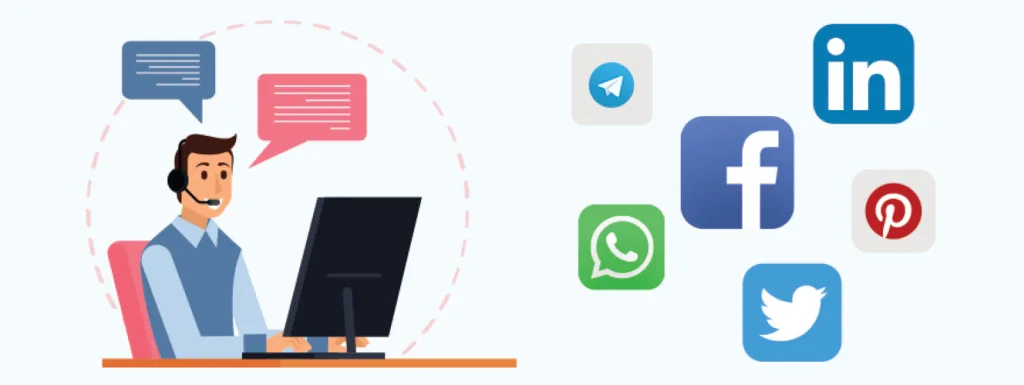
Social media customer service refers to using platforms like Facebook, Twitter, Instagram, and LinkedIn to address customer inquiries, resolve issues, and engage with your audience.
Unlike traditional methods such as email or call centers, social platforms allow for real-time interaction and public visibility of your responses.
This form of customer care enables businesses to provide immediate responses to customer messages, handle complaints effectively, and foster deeper connections with their audience.
It’s not just about resolving problems; it’s about creating a positive customer service experience that builds trust and loyalty.
Benefits of Social Media Customer Service
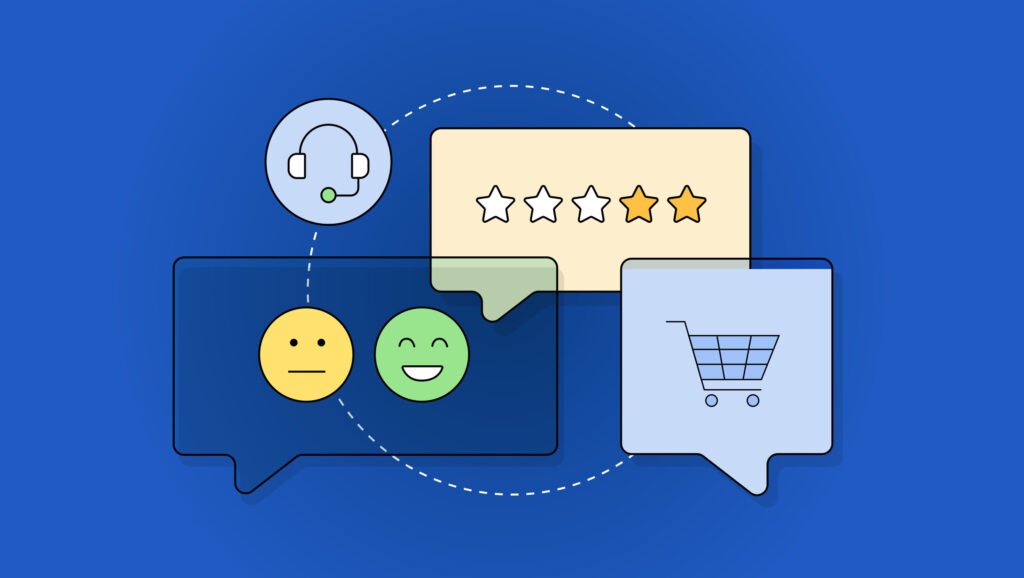
Good customer service on social media has many benefits which are as follows:
- Boost Customer Loyalty: When customers see that their concerns are addressed promptly on social media, it fosters trust and loyalty. A satisfied customer is more likely to recommend your brand and remain loyal over time.
- Increase Brand Awareness: Effective social media customer service can amplify your brand’s visibility. Public interactions—whether resolving complaints or responding to praise—showcase your commitment to customers, enhancing your brand image.
- Enhance Crisis Management and Response: Social media provides a platform for immediate communication during crises. Quick responses can mitigate negative feedback and protect your brand’s reputation during challenging times.
How to Start Customer Service On Social Media?

To start customer service on social media follow these steps:
- Step 1: Pick the Right Support Channels: Identify where your audience is most active. Platforms like Twitter are ideal for quick updates, while Facebook Messenger works well for personalized support.
- Step 2: Tidy Up Your Online Space: Ensure your profiles are professional and up-to-date with accurate contact information and links to your help center or website.
- Step 3: Consider a Dedicated Customer Support Account: Brands like Nike have separate accounts for customer support. This approach helps streamline incoming messages and sets clear expectations for users seeking help.
- Step 4: Make it Easy to Get Support: Simplify the process by offering clear instructions on how customers can reach you via social media channels or direct messages.
- Step 5: Use All the Platform Messaging Features: Use tools like Facebook Messenger chatbots or Instagram’s quick replies to enhance efficiency in handling queries.
- Step 6: Keep Everything in One Place: Use a social media management platform to centralize all incoming messages from different channels for better organization and faster response times.
- Step 7: Develop a Game Plan For Your Response Strategy: Outline how your team will handle various scenarios—from generic questions to complex complaints—and ensure consistency in tone of voice across all interactions.
- Step 8: Check How You’re Doing: Regularly monitor key metrics like response time, engagement rate, and resolution rate using analytics tools to measure the effectiveness of your strategy.
How to Provide Great Customer Service On Social Media? 10 Tips
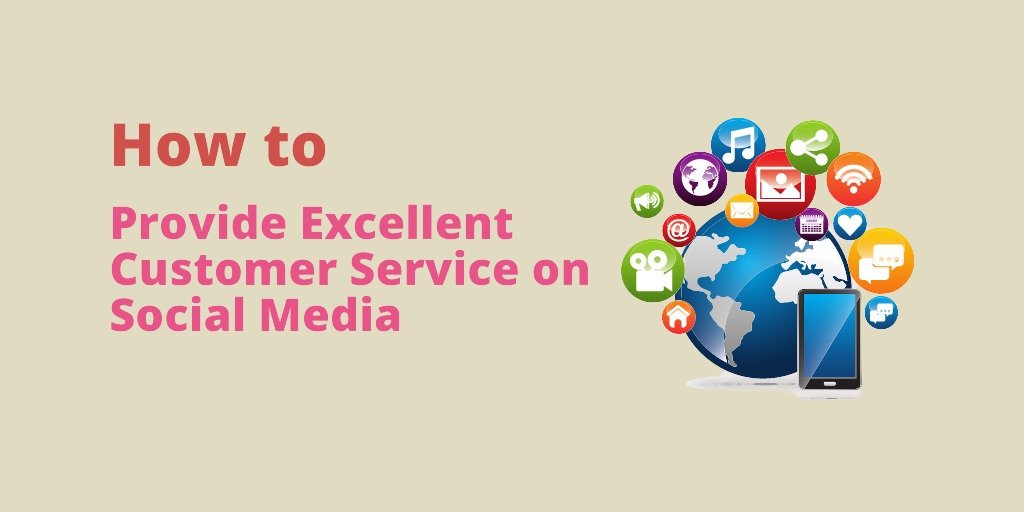
Providing great customer service on social media is more than just answering questions. It takes careful thought, understanding, and empathy for your audience’s wants. By being quick, personal, and genuine, you can make your brand stand out.
Each interaction is a chance to change a customer into a loyal supporter. Use these tips and always look for ways to get better. This way, you will build a loyal group of followers and enjoy the lasting rewards of good social customer care.
- Respond Quickly: Fast response times are critical in social media customer service. Customers expect an immediate response, often within an hour, and delays can harm your brand image. Quick replies show that you value your customers’ time and concerns, improving customer satisfaction and trust.
- Use Social Listening to Better Understand Your Customers: Use social listening tools to monitor brand mentions, public comments, and customer sentiment. This helps you understand what your audience needs, identify trends, and proactively address customer issues, enhancing the overall customer experience.
- Consider Separate Social Media Customer Service Channels: Create dedicated accounts for social media customer care, as many brands do on Twitter or Facebook. This makes it easier for customers to find support and helps your team focus on resolving customer inquiries efficiently without mixing them with marketing content.
- Set Expectations: Let customers know your availability for support, such as operating hours for your customer support team. Setting clear expectations about response times builds trust and reduces frustration when immediate replies aren’t possible.
- Understand Geographic Preferences: If your audience spans multiple regions, consider time zones and cultural differences in your responses. Tailoring your approach to geographic preferences ensures better customer engagement and improves the effectiveness of your social media strategy.
- Reply to Everyone’s: Respond to all customer messages, whether they’re positive, negative, or neutral. Ignoring feedback—especially negative comments—can harm your reputation. Acknowledging every interaction shows that you care about your audience’s opinions.
- Scale Up With AI For Faster Response Times: AI tools like chatbots on platforms such as Facebook Messenger can handle basic queries or FAQs, reducing response times. While automation improves efficiency, ensures complex issues are handled by the customer support team to maintain a human touch.
- Monitor Social Media Customer Service Analytics: Track metrics like response time, resolution rate, and engagement rate using analytics tools. These insights help evaluate the success of your social customer service strategy and identify areas for improvement.
- Know How to Handle Negative Feedback: Respond to negative comments professionally and with empathy. Acknowledge the issue, offer solutions, and take the conversation to private messages if needed. Handling complaints well can turn a negative experience into a positive one, boosting loyalty.
- Be Accessible: Make it easy for customers to contact you by providing clear instructions on how to reach your team via direct messages or public channels. Accessibility across platforms ensures no query goes unanswered, improving overall customer satisfaction and retention.
Why Should You Provide Social Media Customer Service?

- Customers expect fast responses on social platforms; failing to meet these expectations can harm your reputation.
- It directly impacts your brand image—both positively and negatively—depending on how you handle interactions.
- There’s a financial benefit in retaining customers through excellent service rather than acquiring new ones.
- Proactive engagement helps exceed customer expectations, leading to higher satisfaction rates.
Which Team Has The Responsibility For Social Media Customer Care?

The responsibility of managing social media customer care typically falls on a dedicated customer support team.
This team is skilled in addressing customer inquiries, resolving customer issues, and monitoring brand mentions across platforms.
In some cases, the marketing team also collaborates to ensure a consistent tone of voice and align the social media strategy with broader brand goals.
Which Social Media Channels Should You Focus On?
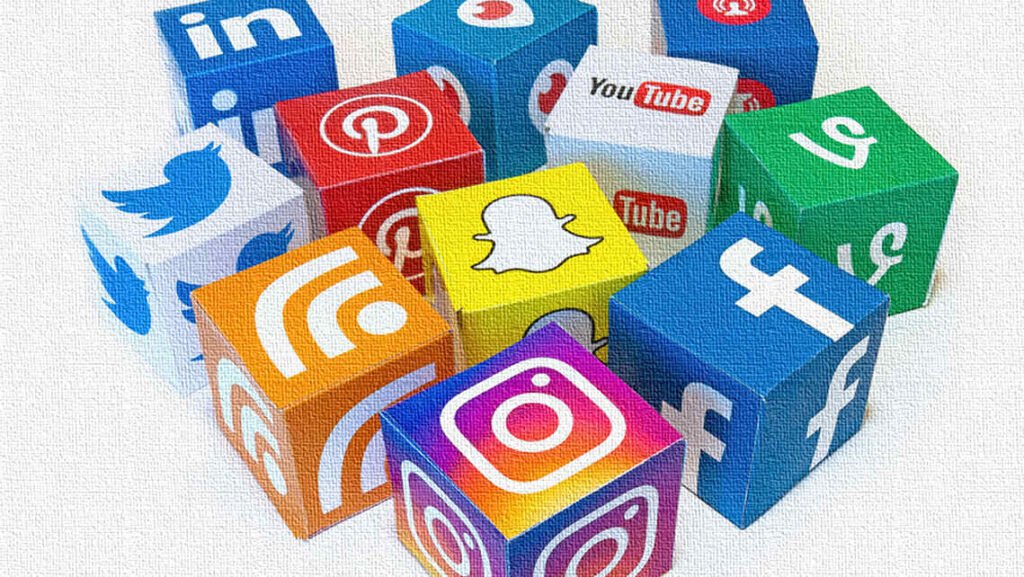
Focus on platforms where your audience is most active.
For example:
- Facebook Messenger for private, real-time support.
- Twitter for quick responses to public mentions or complaints.
- Instagram for addressing comments and direct messages while monitoring hashtags.
- Platforms like Reddit or Snapchat can be valuable depending on your target demographic.
Each channel offers unique features like live chat, direct messaging, or public comment handling to cater to different types of customer interactions.
Prioritizing these channels ensures better customer engagement, faster response times, and improved overall customer satisfaction.
Social Customer Service Statistics
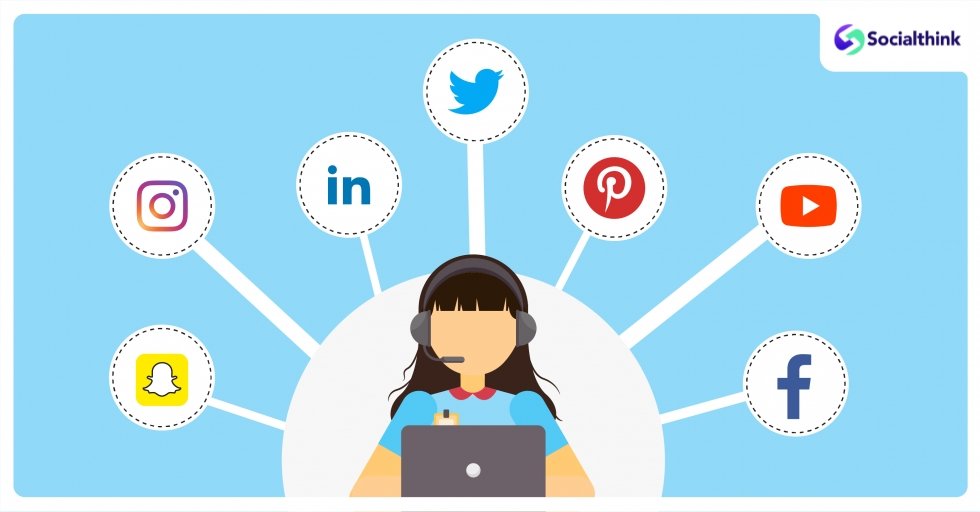
- 40% of customers expect a response within an hour when reaching out via social media.
- Responding to complaints on social platforms can boost brand advocacy by 25%.
- Businesses that engage with customers on social media cut their cost per contact by up to 83%.
- 71% of customers who have a positive experience with a brand’s social media support recommend it to others.
- Companies that respond effectively see customers spending 20–40% more with them.
These statistics highlight how critical it is to provide timely and efficient social customer care, as it directly impacts both customer loyalty and business profitability.
Social Media Customer Service Examples
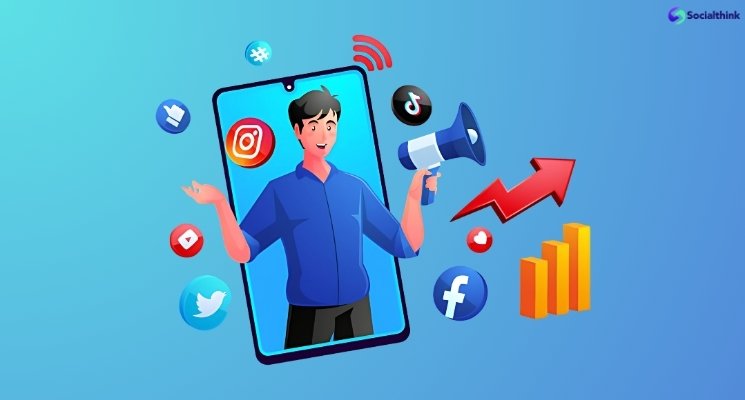
Looking at real-world examples helps you understand how to do effective customer service on social media. Some brands stand out in this area. They show best practices that others can learn from.
These companies highlight the need to be quick, personalize their responses, and truly care about meeting customer expectations. By learning from what they do, you can improve your social customer care efforts.
- Marks and Spencer: Marks & Spencer excels in social media customer care by actively listening to customer feedback and engaging with their audience. They use platforms like Twitter and Facebook to address customer inquiries and even crowdsource ideas, such as voting for product flavors. Their campaigns, like the Percy Pig sweets story, showcase how they turn customer comments into actionable insights, boosting both sales and customer satisfaction.
- Domino’s Pizza: Domino’s uses Twitter as a primary customer service channel, responding quickly to complaints and queries with humor and accountability. They personalize responses, provide tracking numbers for issues, and use memes to keep the tone light. This approach not only resolves customer issues but also strengthens their brand image by showing they care about their audience.
- BlendJet: BlendJet builds a strong community by encouraging customers to share recipes, photos, and health journeys on social media. Their team actively engages with these posts, addressing customer feedback while showcasing user-generated content. This strategy creates a sense of belonging among their customers and improves their overall customer service experience.
- Selfridges: Selfridges focuses on offering premium support through social media by addressing both public and private customer messages. They ensure quick responses to queries while maintaining a professional yet approachable tone. This helps them maintain their reputation as a high-end retailer that values its customers.
- Coca-Cola: Coca-Cola prioritizes two-way communication by responding to comments and messages across platforms like Instagram and Twitter. They encourage user-generated content, turning customers into brand ambassadors. By listening to their audience and including feedback in campaigns, they enhance customer engagement and foster loyalty.
- Hyundai USA: Hyundai USA sets an example in social customer care by responding promptly to all queries, including negative comments. They focus on resolving specific issues while also addressing general feedback about the brand’s quality. Their quick response times (average 30 minutes) reflect a strong commitment to customer satisfaction, which builds trust and loyalty.
- Microsoft: Microsoft’s Customer Experience Center uses tools like Sprinklr to monitor social media for mentions of their products. With a team dedicated to handling queries across over 160 channels, they ensure no comment or issue goes unnoticed. Their proactive approach highlights how social media can function as an effective extension of traditional customer support teams.
- PNC Bank: PNC Bank uses social media to provide personalized support by promptly addressing customer concerns on platforms like Facebook and Twitter. Their focus on resolving issues efficiently enhances trust among clients while showcasing their commitment to excellent social customer care.
- TD Canada: TD Canada uses social media for real-time interactions with customers, addressing complaints and inquiries quickly. Their emphasis on providing helpful solutions demonstrates how financial institutions can use social platforms effectively to build stronger relationships with their clients.
- Kellogg’s: Kellogg’s actively engages with customers on social media by responding to both positive and negative feedback about their products. Their team ensures every interaction reflects the brand’s dedication to quality and care, reinforcing trust in the company’s offerings.
- Puma: Puma uses social media not just for marketing but also for efficient customer service. They respond quickly to queries about orders or product details while maintaining a friendly tone that aligns with their youthful brand image. This approach improves both their engagement rate and overall customer satisfaction.
What is The Role of Social Media Customer Support?

The role of social media customer support is to address customer inquiries, resolve customer issues, and ensure a positive customer service experience across social platforms.
It involves responding to customer messages, monitoring brand mentions, and managing public comments, including negative feedback.
The goal is to provide an immediate response to build trust and improve customer satisfaction. This team also plays a key role in protecting the brand’s reputation by handling complaints professionally and ensuring a consistent tone of voice.
Additionally, they use social listening tools to understand customer needs better and proactively improve the overall customer experience. Effective social support strengthens customer engagement, boosts loyalty, and helps meet growing customer expectations.
Tools & Technologies Required in Social Customer Service

To deliver great social customer care, businesses need tools that streamline communication, monitor interactions, and track performance.
A social media management platform like Hootsuite or Sprout Social helps centralize all incoming messages from various channels for faster responses.
Chatbots on platforms like Facebook Messenger can handle basic queries, while live chat tools allow for real-time conversations. Analytics tools are essential for tracking metrics like response time, resolution rates, and engagement rates.
Additionally, social listening tools such as Brandwatch help monitor mentions of your brand and analyze customer sentiment.
These technologies ensure that the customer support team can efficiently handle high volumes of queries while maintaining a high level of personalization.
What Tools Are Best For Monitoring Social Media Queries?

Several tools are ideal for monitoring social media queries and improving your social customer service strategy:
- Hootsuite: Helps manage multiple social accounts in one place, track mentions of your brand, and respond quickly to incoming messages.
- Sprout Social: Offers advanced analytics and scheduling features while enabling teams to collaborate on resolving customer complaints.
- Zendesk: Integrates with social platforms to streamline support tickets and track customer interactions across channels.
- Brandwatch: A powerful tool for social listening that monitors keywords, sentiment, and trends related to your brand or industry.
- Salesforce Social Studio: Combines customer data with social insights to provide personalized support and improve the overall experience.
These tools help the support team stay organized, reduce response times, and ensure no query goes unanswered, leading to better customer satisfaction and retention.
FAQ’s:
What Are The Key Components of Social Media Customer Service?
The key components of social media customer service include timely responses to customer inquiries, active social listening, and maintaining a consistent tone of voice across all platforms. It also involves resolving customer issues effectively, monitoring brand mentions, and using analytics to improve the customer service strategy. These elements ensure a positive customer experience and build trust with your audience.
How Does Customer Service Respond to Issues On Social Media?
Customer service teams respond to issues by addressing customer messages promptly, whether through public comments or private direct messages. They use a professional yet empathetic tone to resolve specific issues and provide actionable solutions. Tools like social media management platforms help organize incoming queries, while social listening tools monitor mentions for proactive engagement.
How Can Small Businesses Implement Social Media Customer Service?
Small businesses can start by choosing the right platforms where their customers are most active, like Facebook or Instagram. They should set up clear processes for handling customer queries, use free or affordable tools like Hootsuite for managing messages, and prioritize quick responses. Personalizing interactions and monitoring feedback are also essential for improving the overall customer service experience.
How Quickly Should I Respond to Customer Inquiries On Social Media?
The ideal response time is within an hour, as most social media users expect fast replies. Quick responses improve your engagement rate and show customers that their concerns matter. Delays in addressing customer inquiries can harm your brand’s reputation and reduce customer satisfaction, so aim for prompt action.
Can Social Media Customer Service Improve Sales And How?
Yes, effective social customer care can improve sales by building trust and loyalty among customers. When businesses handle complaints well or provide helpful support, it boosts their reputation and encourages repeat purchases. Engaging with customers on social platforms also increases the likelihood of recommendations, which drives new customer acquisition.
Can Automation Replace Human Interaction in Social Media Customer Service?
Automation can assist with basic tasks like answering FAQs or routing queries using chatbots on platforms like Facebook Messenger, but it cannot fully replace human interaction. Personal responses are important for handling complex issues or negative feedback. A balance between automation and human support ensures faster response times while maintaining a personalized touch in your social customer service strategy.
Conclusion
Social media customer service has become a must-have for businesses aiming to build customer loyalty, protect their brand reputation, and achieve real results.
Providing quick, thoughtful responses to customer inquiries and addressing customer issues shows your audience that you truly care.
At Social Think, we specialize in creating effective social media strategies and delivering actionable insights to improve your social customer care efforts.
With the right tools, a skilled customer support team, and a focus on meeting customer expectations, you can create a positive customer service experience that sets your brand apart. Want to take your social media customer care to the next level? Contact us today!







